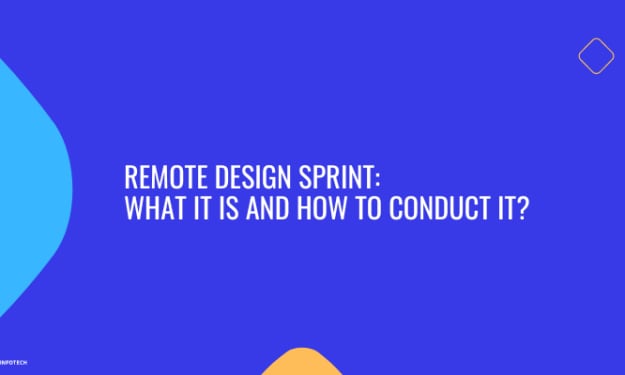How UX Research Impacts Product Design: A Complete Guide
How UX Research Impacts Product Design: A Complete Guide

In today's fast-paced world, users expect seamless experiences while interacting with products that cater to their needs. At the forefront of crafting these delightful experiences lies UX research - a process that goes beyond just designing an interface. It involves gaining insights into user behavior, preferences, and pain points. Now, with innovation and the increasing importance placed on delivering exceptional user experience, understanding and leveraging user experience research have become essential. It helps to derive efficient problem-solving and offers a unique user experience. Other than providing a top-notch experience, it also helps to deliver an impact on product design and development. This blog post will explore the same with a detailed understanding. So, let's get started!
What is UX research and design?
The need and dependency on products are ever-changing. With innovations and the taste of customers, the demand for products is also changing. This is where UX research for new products comes into the picture. UX research is a process for understanding the product's target users' needs, wants, and behaviors. By studying the users in the natural environment, how they interact with a product and their pain points can be analyzed. This information can also identify the product design and make it more user-friendly. A UX researcher studies this pattern to understand the actual need and then utilizes it per the needs.
Importance of UX research
When discussing product Design, focusing on User-Centered Design Practices is mandatory. The main aim of this principle is to ensure that users' perspectives and needs are thoroughly analyzed. The only way to get a grip on this is by properly utilizing UX research. The paramount importance of UX research is the uncountable benefits it offers before a product is developed and designed. Some of these tend to include:
- It helps to learn about a Users Persona
- Provides knowledge about competitors
- Analysis of the current market
- Reflects early product results
Although the benefits are known to people, most users still decide to avoid them for expenses. But they need to realize that directing proper UX research makes it challenging to design a product successfully. The most prominent negative impacts include:
- Products won't help users
- Loose competitive edge
- Developing negative user experience and feedback.
Types of UX Design Research Methods
Now that the importance of UX research has been discussed. It is time to identify better the various types of UX research most often used. Let's get a clear view of the UX design research methods.
Primary Research
This is usually the most used and traditional way of collecting data for a specific product or research. When utilizing this process, it is ensured that the verified objectives of a definite project are kept in mind. Conducting this process also means when a team directly interacts with the users by questioning and surveying them. Some ways these primary research methods are followed include:
- Interviewing the users by collecting relevant data and analytics
- Creating focus groups of selected candidates to gather proper information and insights about products
- Utilizing contextual observations in the natural user's persona by identifying their behavior
- Facilitating usability testing of the product beforehand and hypotheses of its value
Once the data are collected and analyzed, a conclusion is drawn adequately from t, and a report is created. As primary data are typically an elaborated process, the overall time invested is a bit more.
Secondary Research
In this process, the data is collected from existing data. These generally include primary data that have already been collected and evaluated. These data are often collected from selected books, articles, surveys, and more that have been published. Some of the definite ways these data are collected include research centers, specialized magazines, findings on the internet, and company data.
Quick/ Rapid Research
Developing a new product always comes with its own set of priorities. One such essential priority is the overall timeline and frame of deadlines. It is crucial to maintain and check deadlines when developing new products continuously. But for a few innovations, the schedule is tight over others. Rapid research is for those products that need quick answers and analysis. It helps to get fast research data without investing too much time. The below image showcases the usability of research methods in UX.
Impact of UX research
The impact of UX research has much to consider and evaluate for better understanding. If proper UX research is not done, it is more likely that assuming the outcome of a product is done. But when choosing to follow the research, it has quite a few impacts on user experience. Let's unravel these for a clear view.
Helps to validate the potential market value
Designing a product based on nothing but assumptions is not worth the choice. It will affect not only the investment but also the labor behind the creation of it. Therefore, the best way to do it is by conducting UX research. It provides the benefit of directly questioning the users about their needs. The best part is these are usually asked of users who have no measures of biases involved in the process. This helps to get a clear answer without any challenge at all. It helps to quickly solve problems by validating market research and current value.
Analyses the loopholes and strengths of an idea
Creating a product completely based on understanding is not enough. This becomes even worse when in the end, it is identified that users are not approving of it. This issue can be effectively handled with the help of UX research. It offers a complete solution to learn about any weaknesses or loopholes beforehand. Thereby, there is a fair chance of rectifying it for better benefit and user experience.
Effectively reduces the overall cost.
Any product design currently comes with an additional cost of making it. This entire design becomes quite complex and expensive when redesigning charges are involved. However, following UX research before completing the product helps eliminate this challenge to a certain level. It helps to better understand the product and how the users will accept it. This provides an understanding of whether there is any need to redesign it.
Provides scope for innovation
UX research in the initial stage of product development and allows the benefit of analyzing the need for new features. Considering UX research helps to observe whether users require something else. If the value is identified, properly aligning the same feature is utilized to offer maximum customer satisfaction.
How to utilize the use of UX Research in Product Design?
Now, let's look at how UX research can be utilized in project development and design.
Discovery Phase
This is one of the initial and primary stages of product development. During this phase, extensive research is done to understand the product outcome better. UX research at this stage is essential to analyze whether the product has future potential. The main goal of processing this research is to determine the following correctly:
- Recognizing the pain points and mental models of target users
- Forming a definite user persona and checking it for value
- Consideration of any barriers or problems when developing the product
The research can be better carried out by following UX mapping and other strategic measures like surveys and interviews.
Prototyping/Design Phase
One of the most crucial phases of the product design process. During this stage, following UX research is mandatory. This will help identify a product's target users' optimization level. Methods that can be used for better analysis include prototype validation, enforcing usability tests, and content analysis to check users' understanding of it.
After Development Phase
Even when the product is ready to be deployed and designed, it still needs inspection. This is to understand whether the product's quality is maintained after delivery. It also ideally pinpoints the challenges and drawbacks of development completely. Several businesses often try to skip the UX research phase to deploy the product in the market. However, a research showcases that, on average, each dollar invested in UX helps to bring in more than 100 dollars as a return. The ROI increases, so user research matters and needs to be followed. Further, the image suggests how a non-responsive UX design website affects customer interest.
Common Pitfalls to Avoid When Conducting UX Research
Conducting UX research can be tricky, and a few common pitfalls can be challenging to handle. Let's get to know some of the most common pitfalls and how to avoid them:
1. Not Defining Product Goals
Before starting the research, stepping back and defining what it will accomplish is essential. What are the organizational goals for the study? What specific questions need to be answered? With a clear purpose, getting sidetracked or collecting only valuable data is accessible.
2. Over-reliance on Surveys
Surveys can often be a great way to gather data, but they should only be one part of the research process. Relying too heavily on surveys might take advantage of essential insights that can only be gathered through more direct methods like interviews or usability testing.
3. Not Talking to Enough People
It is important to Talk to as many people as possible when conducting UX research. This is why it is important not to rely on a single experience and observe the potentialities. The more perspectives, the better it will help to understand the user experience and identify areas for improvement.
4. Ignoring Negative Feedback
It's quite easy to get caught up in the idea of making things perfect for users, but the reality is that every product or design is ever seamless. Due to this, it is crucial to assess the negative feedback and address them appropriately.
Conclusion
UX research is invaluable for product design teams to understand user needs and behaviors. By using a data-driven approach to understanding users, teams can identify insights quickly and use those insights to spark innovation in the form of product ideas. Ultimately, having access to meaningful insights about users helps product designers create experiences that resonate with their audience. Therefore, UX research is crucial for any new or upgrading of an existing product.
About the Creator
Jessica Bennett
Jessica is an individual contributor for various leading publications. Writing about technology, design and the latest innovations is her primary knack. She also works for Unified Infotech, a technology service provider serving startups.






Comments
There are no comments for this story
Be the first to respond and start the conversation.